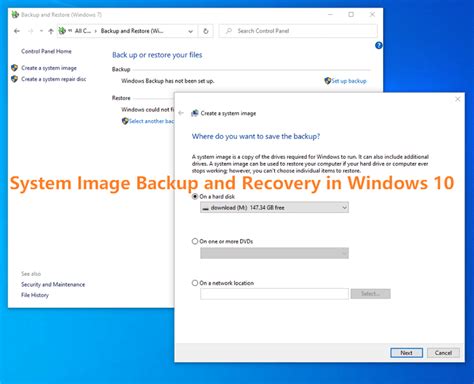Restore Your System: BSD/RC.TA Recovery – A Comprehensive Guide
System crashes can be devastating, leaving you scrambling to restore your data and functionality. One particularly frustrating scenario involves encountering a BSD/RC.TA error during the recovery process. This comprehensive guide will delve into the intricacies of this error, exploring its causes, and providing step-by-step solutions to restore your system. We'll address common questions and provide expert insights to help you navigate this challenging situation effectively.
What is BSD/RC.TA?
BSD/RC.TA isn't a specific error code in the traditional sense; instead, it's often associated with boot sector issues, particularly within the context of BSD (Berkeley Software Distribution) based systems or systems experiencing problems with the Recovery Console (RC) and potentially related to a corrupted system partition (often denoted by "TA" in system logs or error messages). The core problem lies in the system's inability to correctly load and access the necessary files required to boot. This typically points towards damage or corruption affecting critical system files within the boot partition or the recovery environment itself.
Causes of BSD/RC.TA Related Boot Problems
Several factors can contribute to the BSD/RC.TA related boot failures:
- Hard Drive Failure: Physical damage to your hard drive's platters or heads can corrupt the boot sector and lead to this type of failure. Bad sectors can prevent the system from properly reading the boot information.
- Boot Sector Corruption: Viruses, malware, or unexpected power outages can corrupt the Master Boot Record (MBR) or the boot sector of your operating system, preventing successful startup.
- Faulty Partition Table: The partition table, which defines how your hard drive is divided into partitions, can become corrupted, preventing the system from identifying the boot partition.
- Driver Conflicts: In some cases, driver conflicts or incorrectly installed drivers can interfere with the boot process and lead to errors like those associated with BSD/RC.TA.
- File System Corruption: Problems with the file system (e.g., NTFS, ext4, etc.) can prevent the system from accessing crucial boot files, resulting in a boot failure.
- Hardware Conflicts: Issues with RAM, the motherboard, or other hardware components can disrupt the boot process and lead to errors.
How to Recover from BSD/RC.TA Errors
Recovery from BSD/RC.TA related boot failures requires a systematic approach. The specific steps will vary depending on your operating system and the extent of the damage. However, some general strategies apply:
1. Check for Physical Damage
Before attempting any software-based recovery, visually inspect your hard drive for any physical damage. If there are visible signs of damage (e.g., cracks, dents), you'll likely need to replace the hard drive entirely.
2. Boot from a Recovery Media
The most common approach involves booting from a recovery media (e.g., a bootable USB drive or CD/DVD containing your operating system's installation media or a recovery partition). This allows you to access system repair tools.
3. Run System Repair Tools
Once booted from the recovery media, run system repair tools such as:
- CHKDSK (Windows): This tool checks for and attempts to repair file system errors.
- Bootrec (Windows): This command-line tool can repair the boot sector, MBR, and boot configuration data.
- fsck (Linux): The filesystem check utility for Linux systems. This tool can identify and fix errors in various file systems.
4. Rebuild the Bootloader (GRUB, etc.)
If the bootloader is damaged (indicated by the inability to choose an operating system during boot), you'll need to rebuild it using the appropriate tools available from your recovery media. This is more advanced and requires understanding of your system's bootloader.
5. Consider Data Recovery
If system repair fails to restore your system to a bootable state, professional data recovery services might be necessary to salvage your valuable data from the damaged hard drive.
Frequently Asked Questions (FAQ)
Can I recover my data if I'm getting a BSD/RC.TA error?
Yes, in many cases, you can recover your data. However, it is crucial to avoid further writing to the affected drive to prevent data loss. Booting from a recovery media and using data recovery tools can help you retrieve your files. Professional data recovery services may be necessary for severe damage.
What are the signs of a failing hard drive that could lead to this error?
Signs of a failing hard drive can include unusual noises (clicking, grinding), slow boot times, frequent system crashes, data corruption, and error messages related to disk errors.
Is it always necessary to replace the hard drive?
No. Often, the problem can be resolved by repairing the boot sector, partition table, or file system. However, if the hard drive is physically damaged, replacement is necessary.
Can I prevent BSD/RC.TA errors from happening again?
Regularly backing up your data is the best preventative measure. Keeping your operating system and drivers updated, using reliable antivirus software, and monitoring your hard drive's health can also help reduce the risk of such errors.
By carefully following these steps and understanding the potential causes of BSD/RC.TA related boot problems, you can significantly improve your chances of successfully restoring your system and recovering your valuable data. Remember that seeking professional help is always an option if you are unsure about any of the recovery steps. The information provided here is for educational purposes, and the specific procedures may differ based on your system configuration and the nature of the problem. Always proceed with caution and consider backing up your data before attempting any major system repairs.

